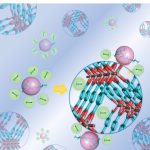Point-of-care testing is essential for the rapid detection of analytes that allows for management and treatment of potentially treatable diseases. Current established lab techniques for quantification of such require trained scientific personnel, external resources, and instrumentation. One such technique is the enzyme-linked immunosorbent assay (ELISA), the gold standard for the detection and quantification of biomarkers, which requires multiple mixing, incubating, and washing steps in an ordered sequence. Microfluidic paper-based analytical devices (uPADs) are valuable diagnostic tools particularly in developing countries, as they are affordable (made from paper, lamination, double-sided adhesive, etc.), sensitive, specific, user-friendly (no scientific background required), rapid and robust, equipment free, and deliverable to the end user. However, uPADs are often limited to single-step biochemical assays and are unable to perform complex assays such as the ELISA. Whitesides, et al. (2018) presents a circumvention to the current limitations of the uPADs to perform ELISAs by incorporating a sliding strip into the device that allows and makes possible to perform the required sequential steps of a traditional ELISA on paper. With each component of a traditional ELISA housed within the device itself and with only three end-user addition steps, one can run an ELISA in a fraction of the time allowing for the rapid, cheap, and easy detection of an analyte for point-of-care testing.



